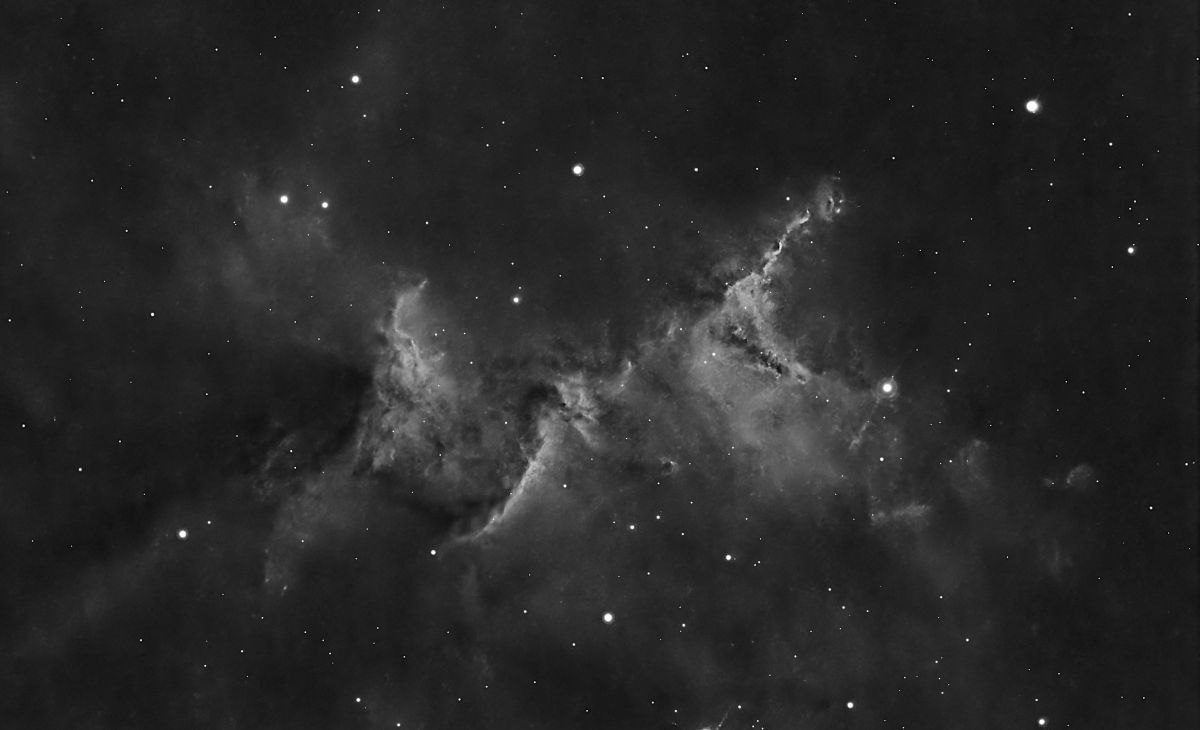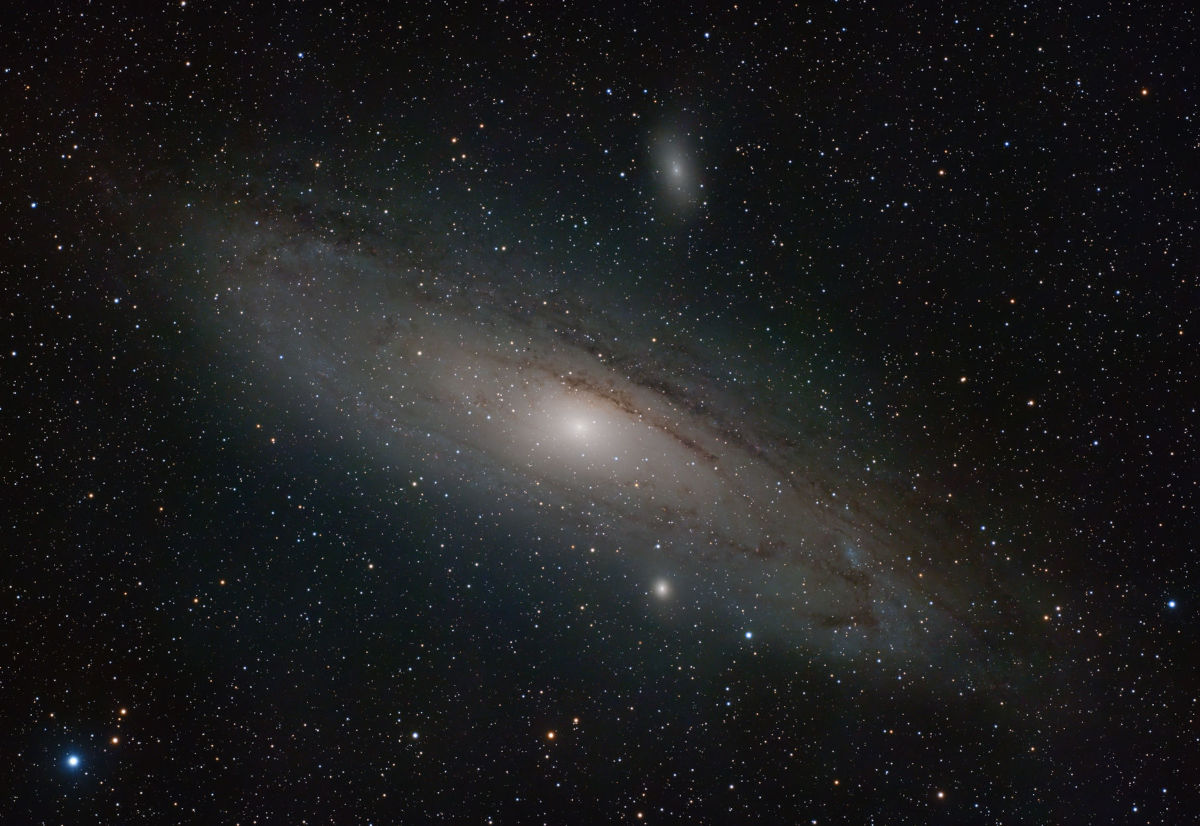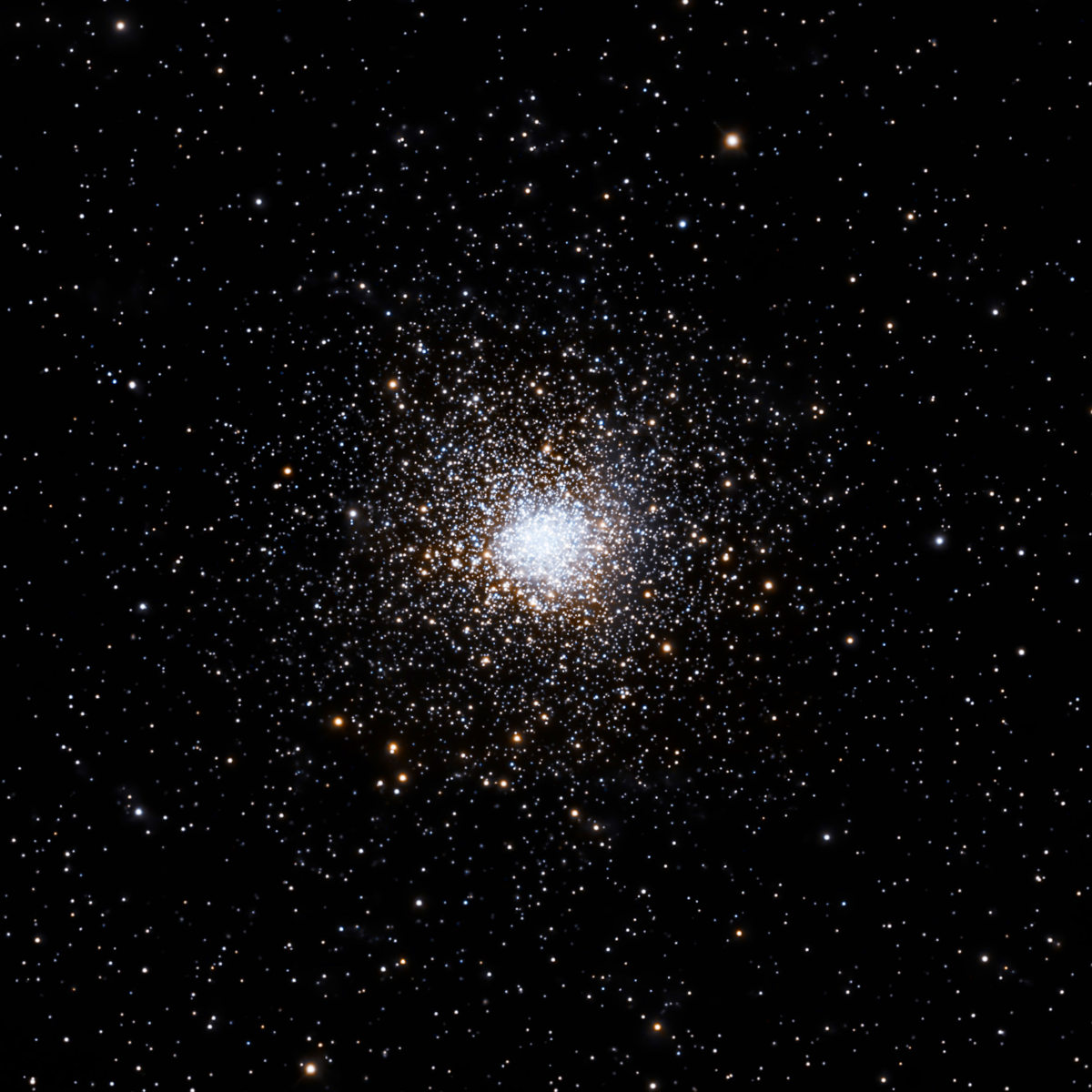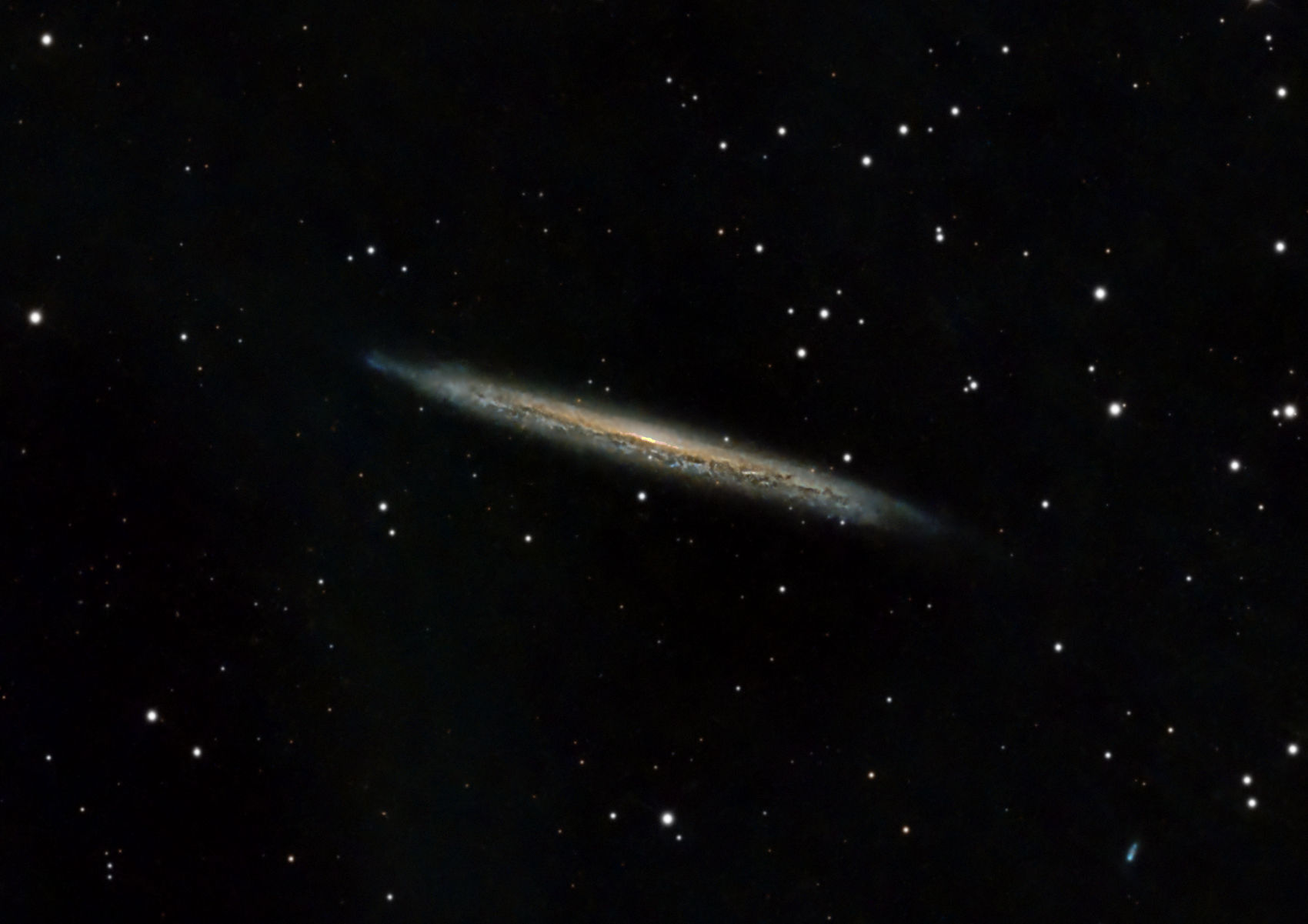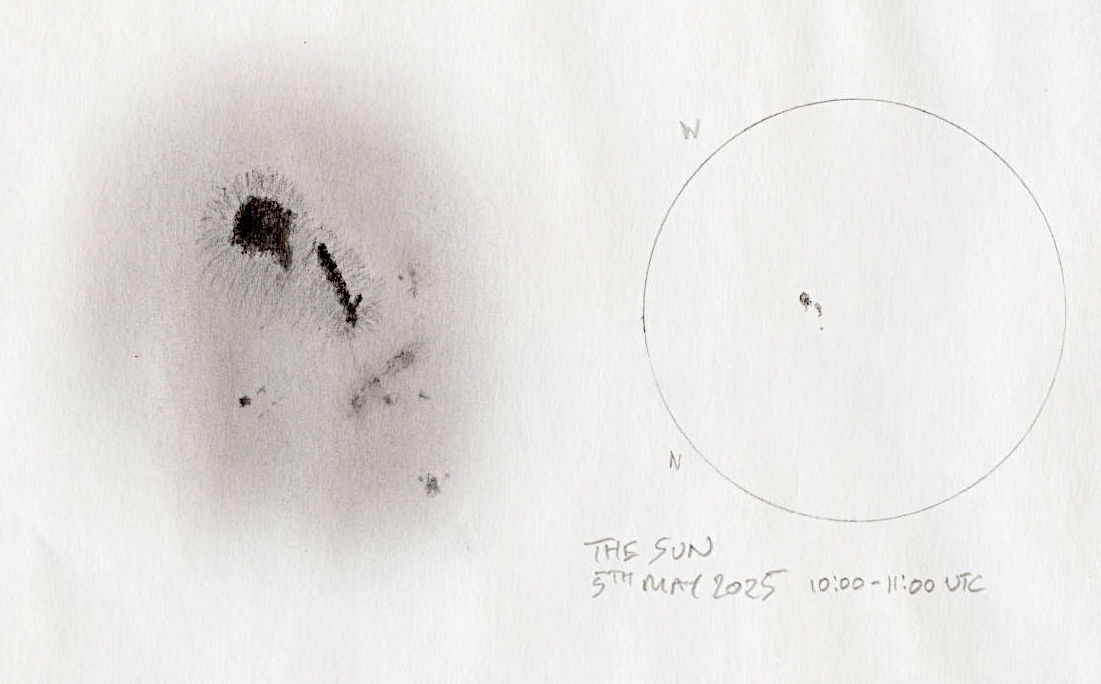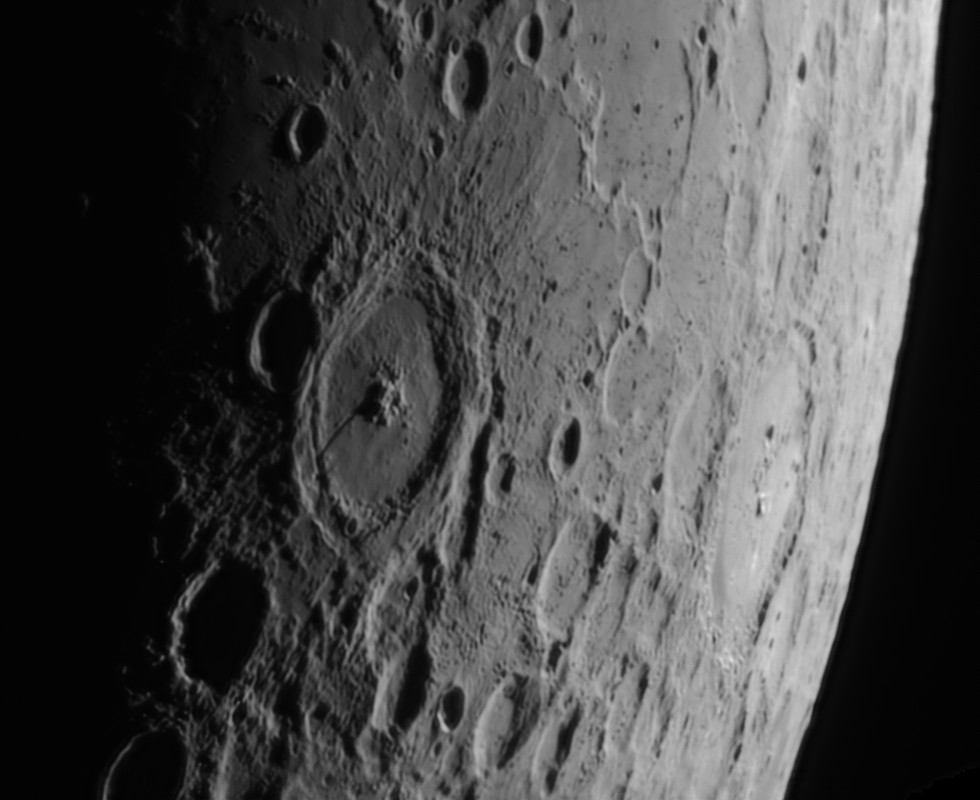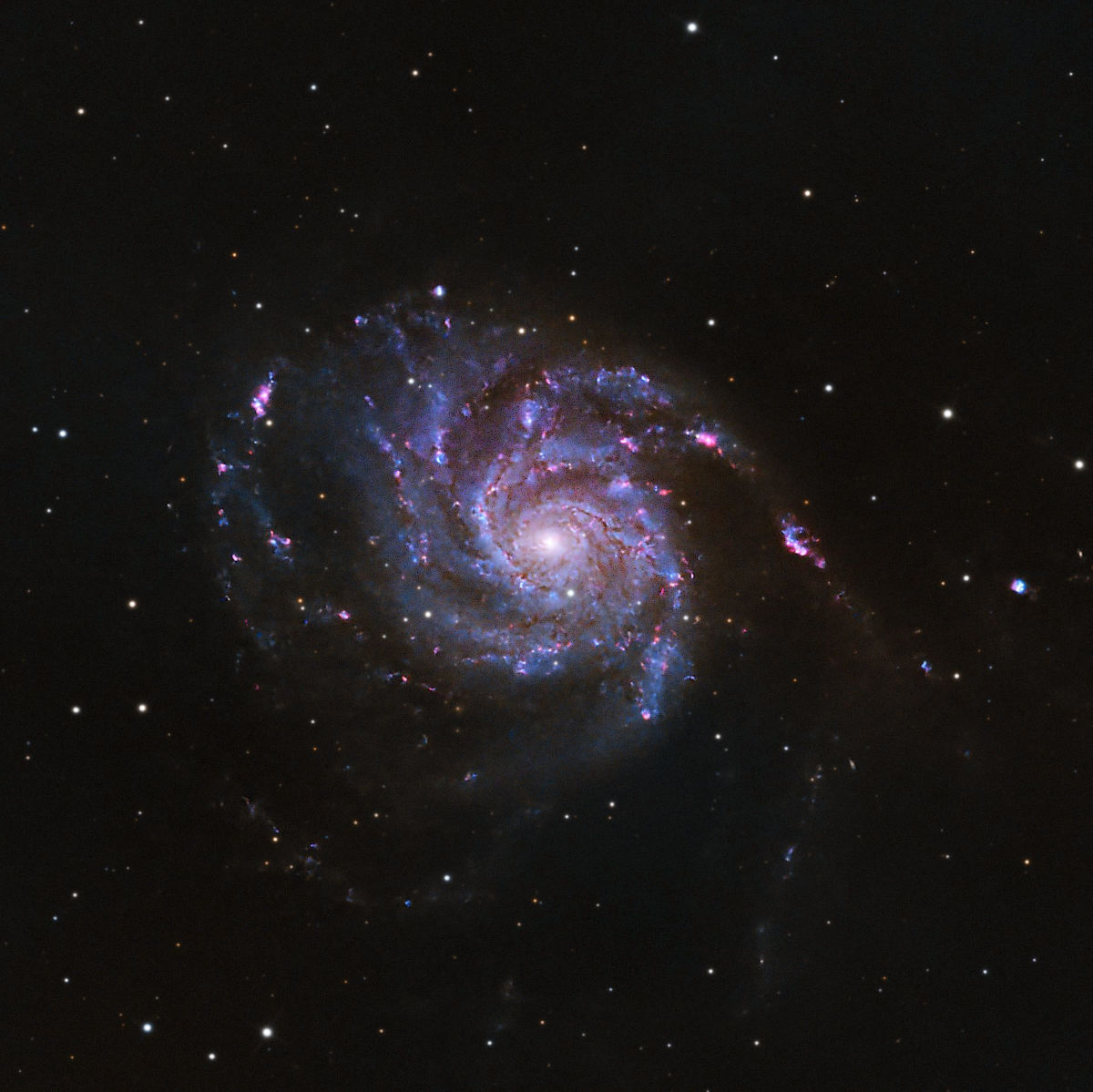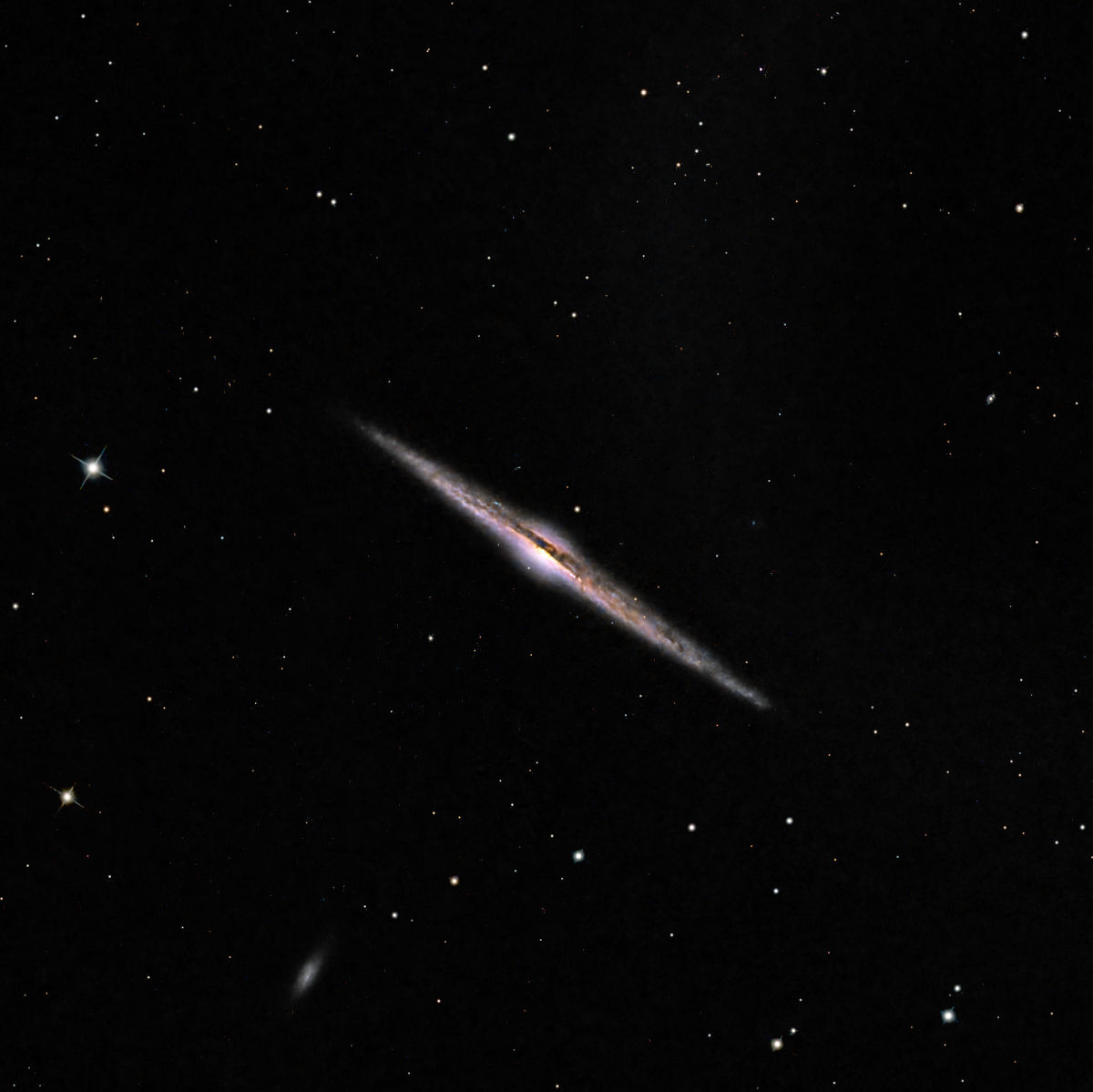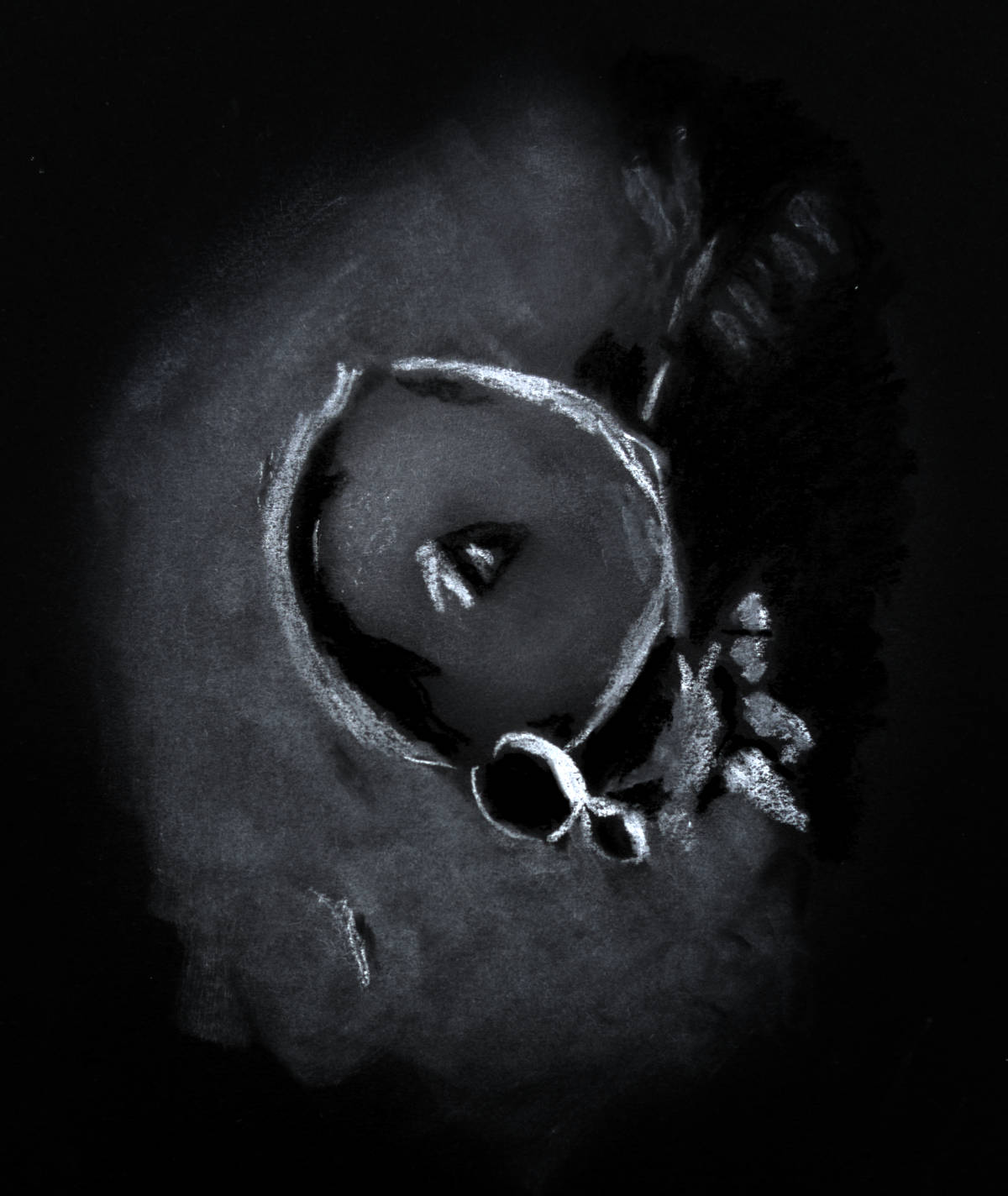
Sketched with white and black charcoal on black paper at the eyepiece over 30 mins between 20h and 21h UT. Again, the sketch was started before the fall of darkness which makes the initial outlining of the main elements on the paper somewhat easier. It was a dramatic sight in the low, slanting light at the Terminator. The terraces on the the crater walls were visible at times though no detail on the surface of the central plain was evident in the conditions.
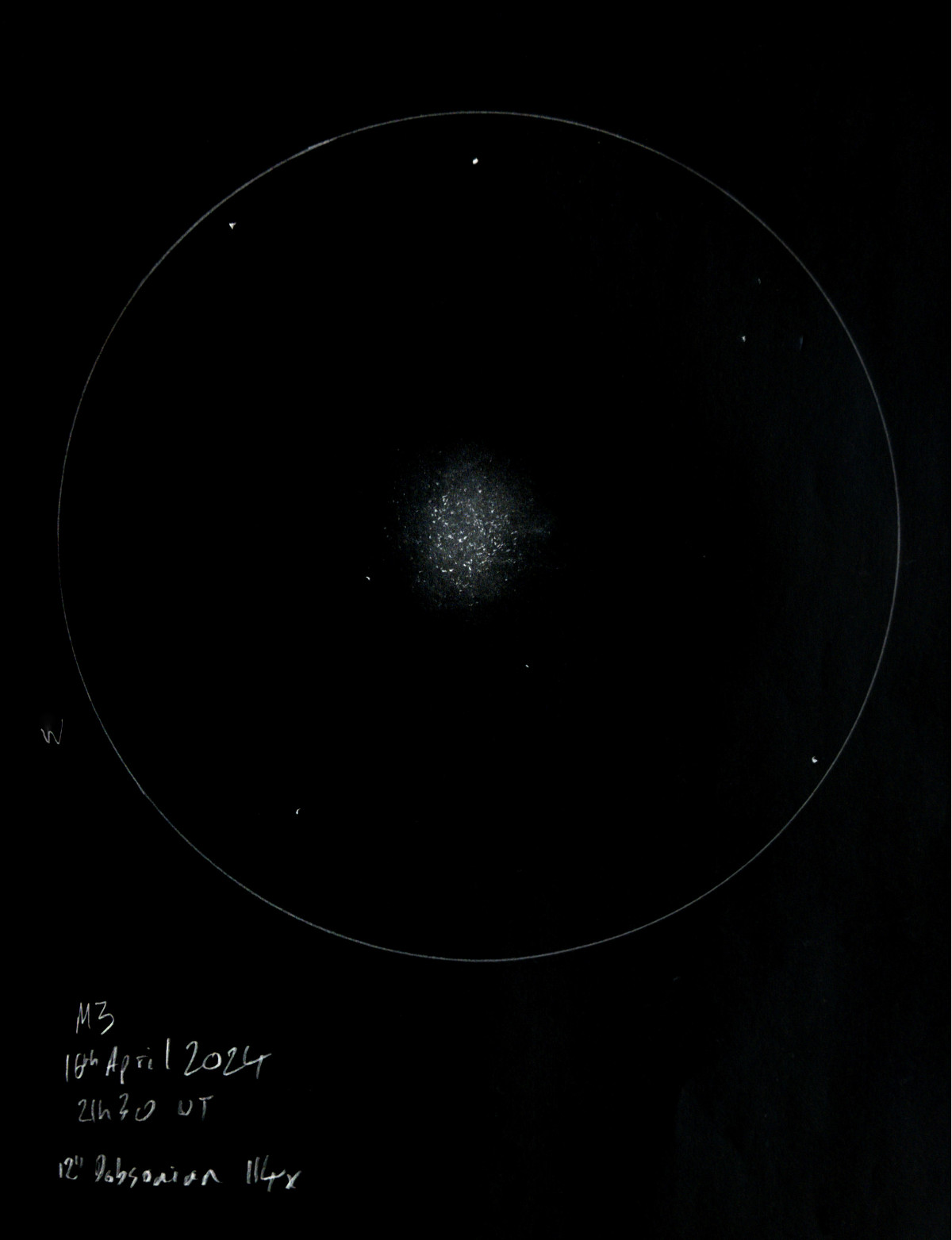
Seeing index: OK (3)
Transparency: Average (3)
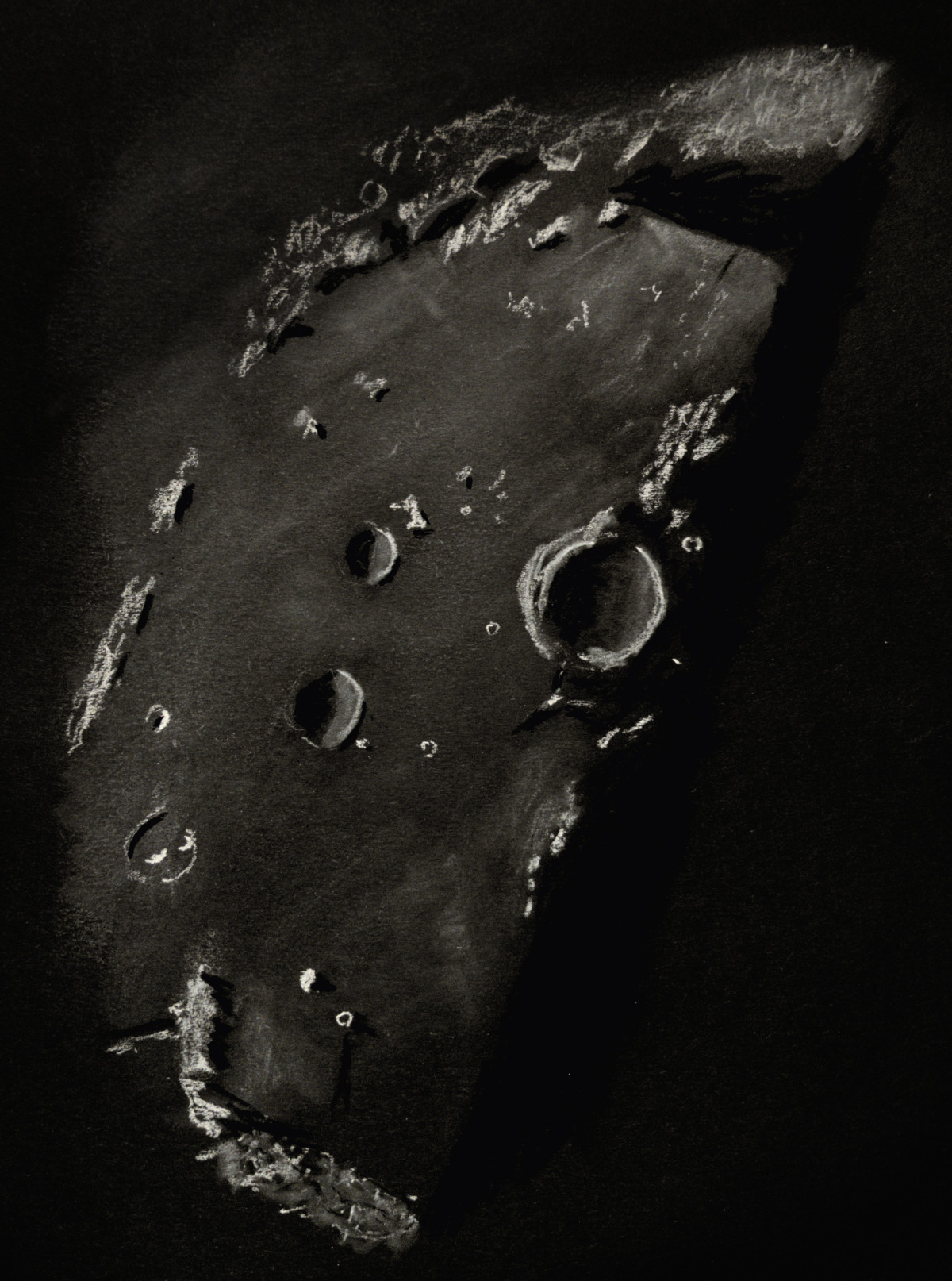
Sketched with white and black charcoal on black paper at the eyepiece over 30 mins between 20h and 21h UT, so the sketch was in fact started before the fall of darkness. Archimedes lies exactly on the illuminated side of the terminator.
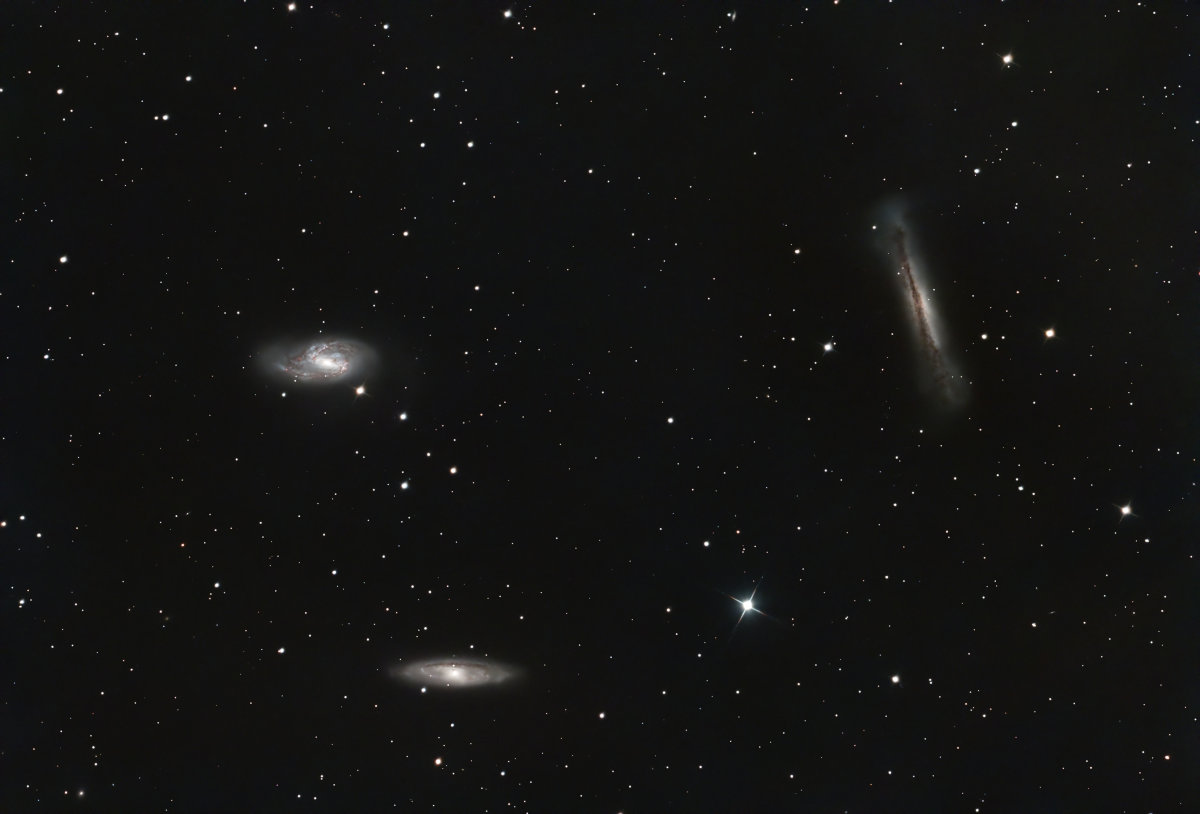
Integration time (running total):
* OSC 75 X 120s (150m)
* Total: 2h30m
Seeing index: Poor/average (1/2)
Jet stream: Poor (30 m/s)
Transparency: Average (3)
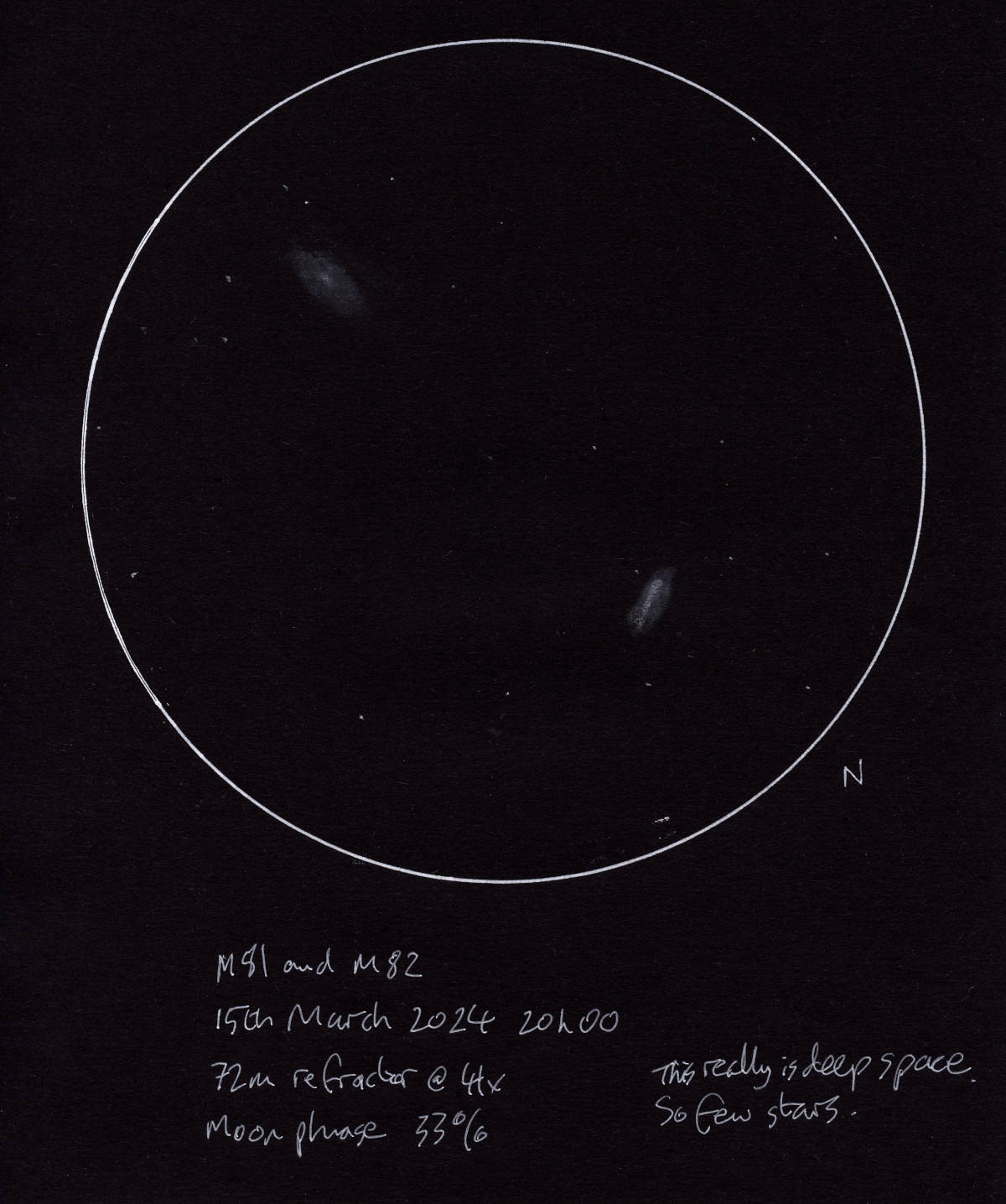
Seeing index: OK (3)
Transparency: Poor/ave (2)
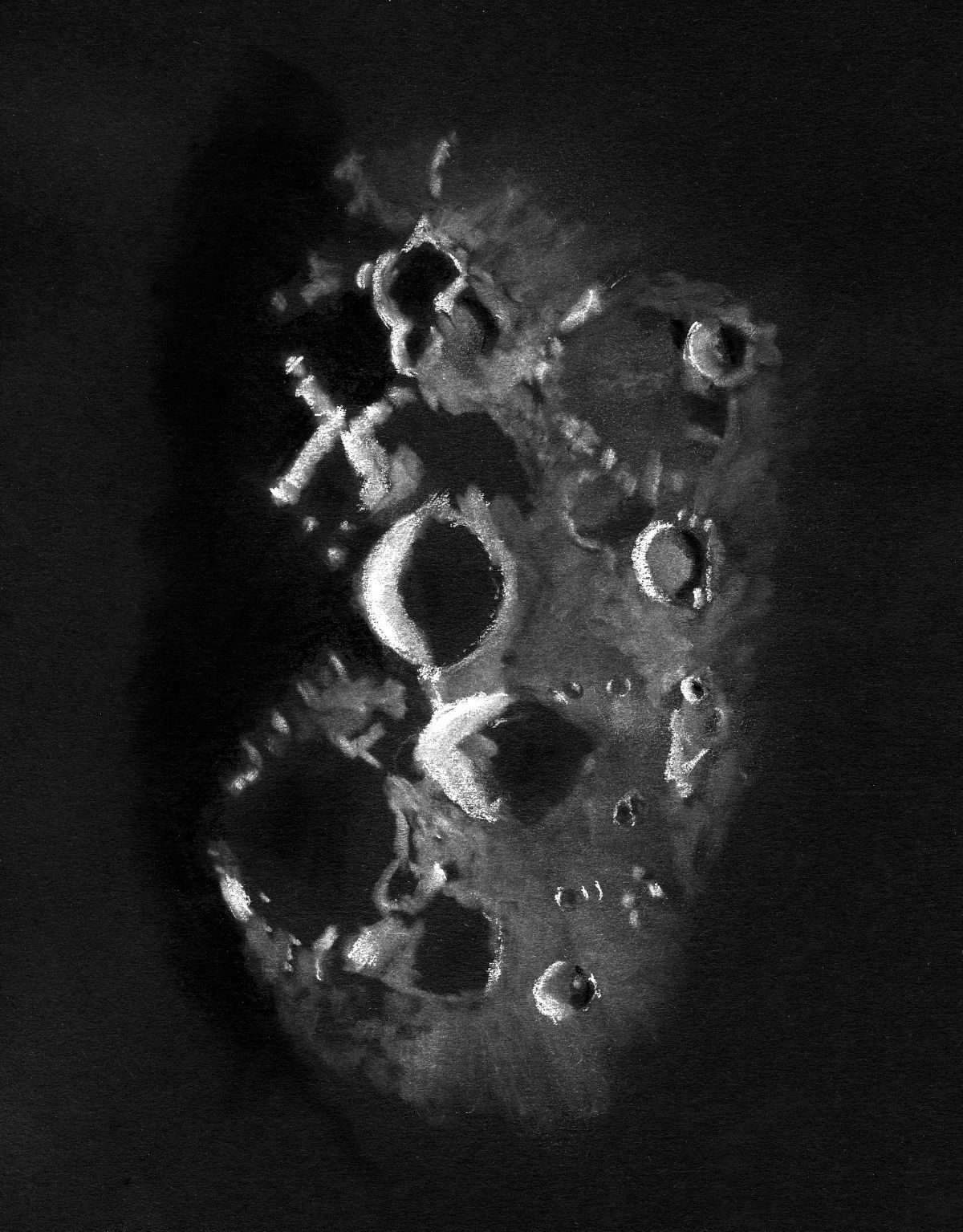
Photographed with the Moon at first quarter at precisely the day/time that this transient effect is visible. I was looking along the terminator and attempting to identify some of the prominent craters when all of a sudden this jumped out at me. I swear that if I had tried to find it it would have taken hours! The effect is actually only visible for approx four hours or so on one day a month when the Moon is at first quarter (lunar day 6.9). The next date it is visible is the 17th March by my…
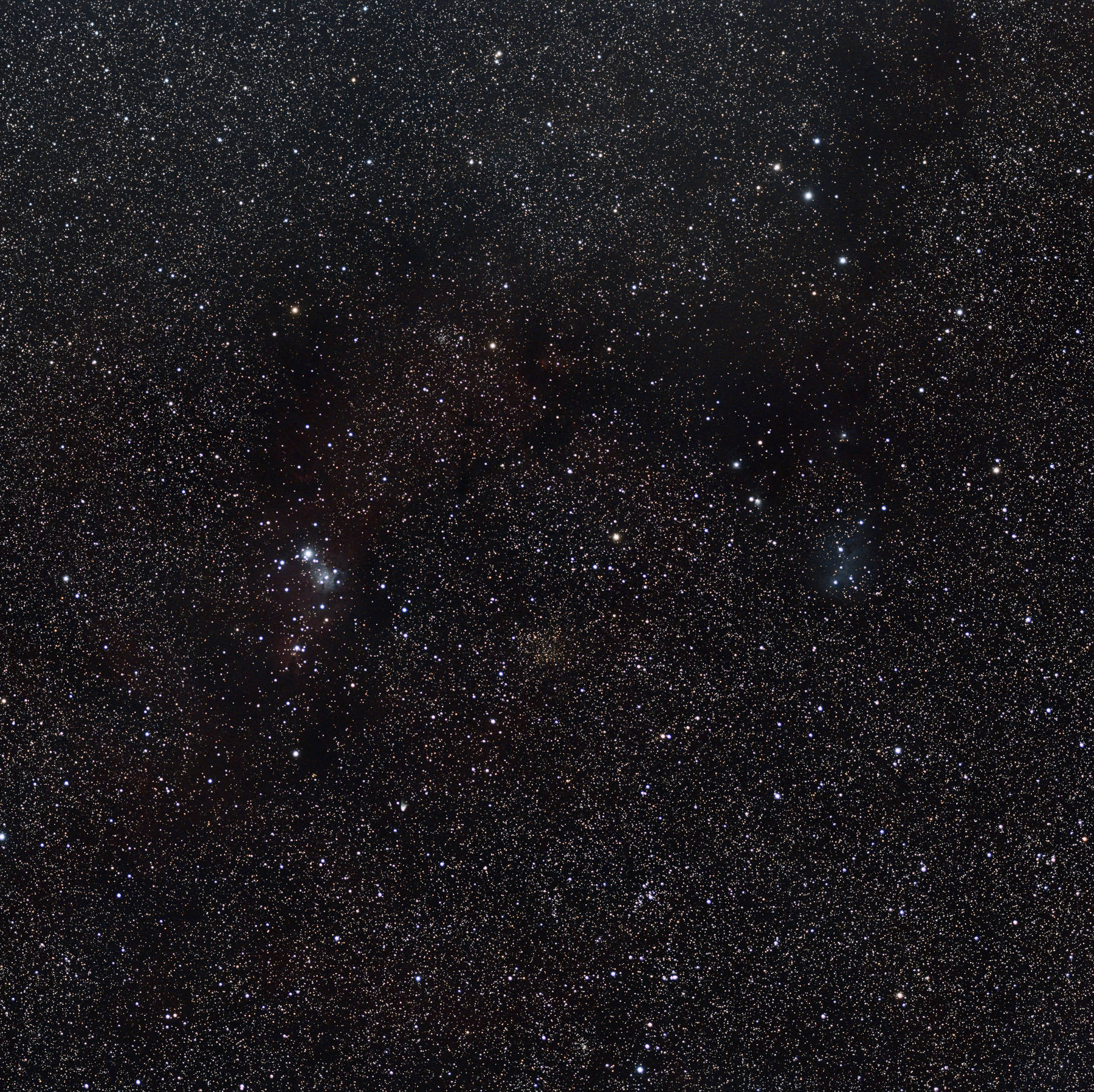
Integration time (running total):
* OSC 139 X 60s (139m)
* Total: 2h19m
Seeing index: OK (3)
Jet stream: Good (7 m/s)
Transparency: Good (4)

Integration time (running total):
* OSC 130 X 180s (390m)
* Total: 6h30m
Integration time target
* Target: 6 hours
* Progress: 100%
Thursday 18th January
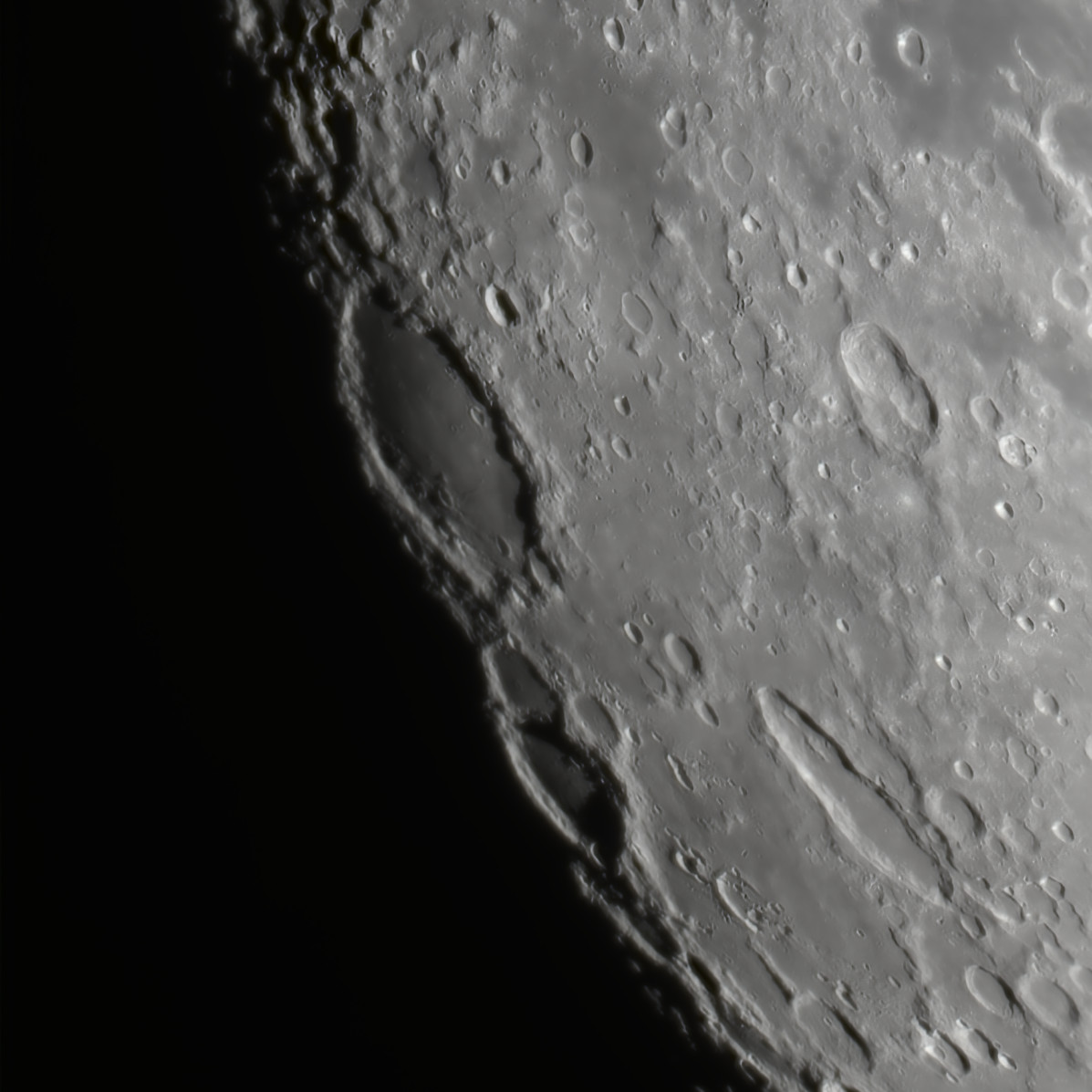
Lucky imaging: best 25% frames from 10000 video frames.
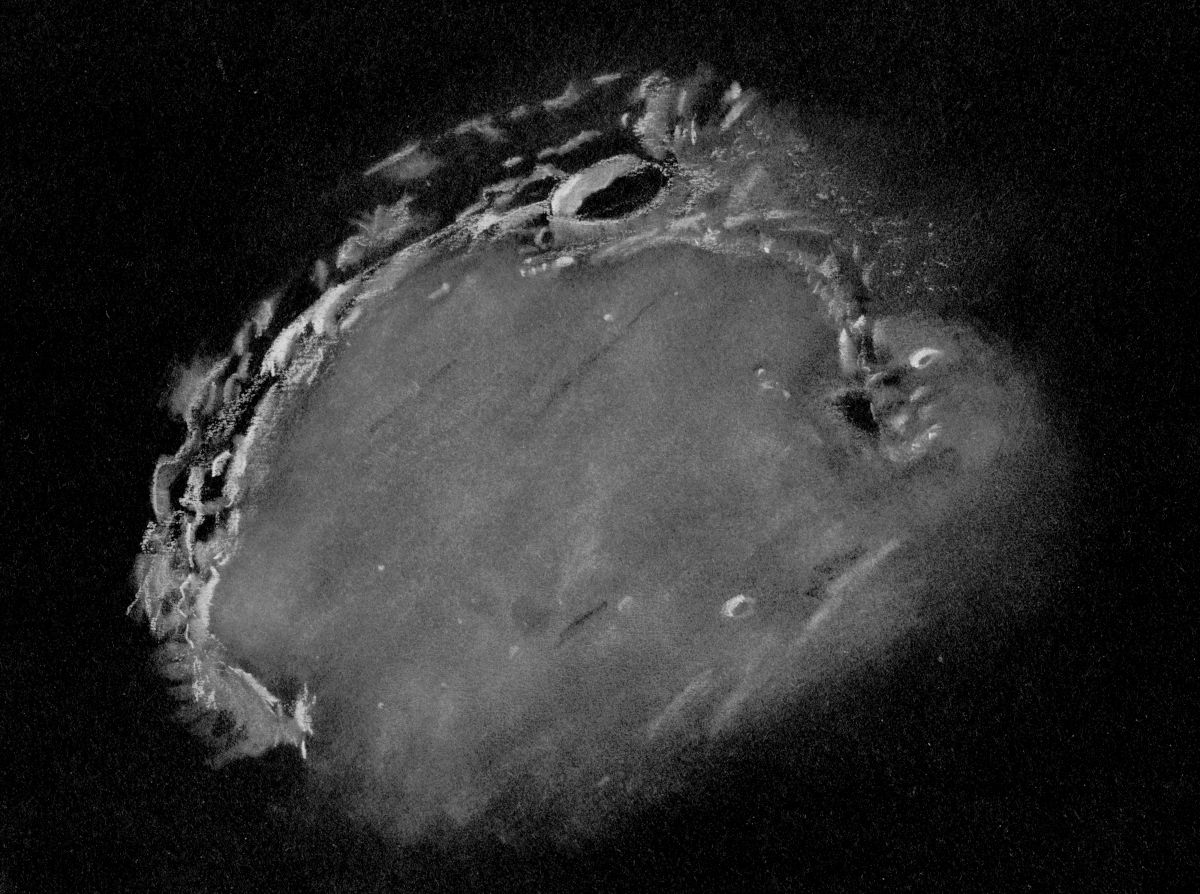

Integration time (running total):
* OSC 307 X 180s (921m)
* Total: 15h21m
Notes
January has been a better month for clear skies making astro imaging possible once again. Hooray! M78 in Orion is a reflection nebula approx 1600 light years from Earth with NGC2071 to its North. Also visible is part of the H-Alpha cloud known as Barnard’s Loop which encircles the left-hand/East side of the constellation. Barely visible on following the line of the dark lane in the centre of M78…











